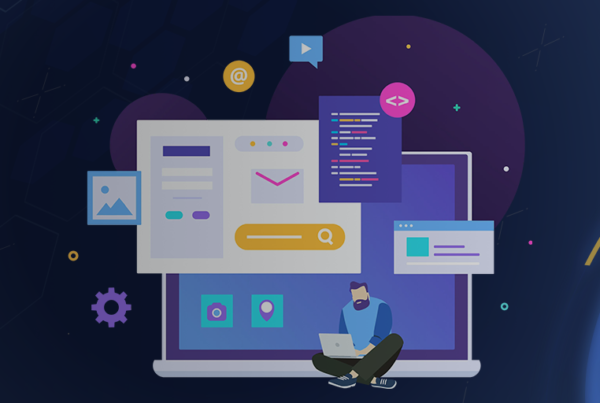Premise
In my previous two articles (see The Digital Body, The Essential Digital Body Parts), I used the analogue of the digital and physical universes to define and understand the “digital body”. The analogy is useful because we really do seem to inhabit two distinct dimensions; the real one and the digital one.
The idea of a digital body, comprising the functionality every individual needs to operate in a digital environment is
In the digital universe, our Digital Bodies are vessels that contain all of The Essential Digital Body Parts to enable our digital bodies with the appendages and instruments to accomplish our goals. When thinking of our physical bodies, we inevitably at some point must address the
The digital system that we live in has ensured that we feel accustomed to consuming software in an isolated and disjointed manner. And this approach to consuming software as separate, packaged products prevents the emergence of a true socio-technological paradigm.
Tools that can be easily built and should be made available to people as fundamental functionality continues to be packaged and sold by companies. The problem goes much deeper. We are deploying time and resources in building out incremental software that provides the same functionality as 100s of other applications that are out there.
When fundamental functionality already exists, then why are we still spending millions and millions on legacy applications which do the same thing? What prevents the emergence of a socio-technological paradigm is a deep-rooted problem of capitalism.
Modern digital capitalism is like “digital squatting”. Companies build something incremental, then squat there and sell it to anyone who will buy it. It goes to the core of social structure and it’s all very feudal. Technology companies should focus on helping the digital body better distribute the digital resources people need in order to thrive.
Imagine what would happen if all of the smart people of today — the adventurous, energetic start-up minds — were free to create more useful tools and classes in an open environment. Capitalization may yet not to be fully eradicated, but if we could put people to solving the next generation of challenges, rather than wastefully investing their time and resources on adding a new menu to a 25 year old application, we’d all be better off.
The Fundamental challenge
Studies over the qualities encompassed in a social entrepreneur have shown that very few individuals possess the talent and skills of entrepreneurs with a primarily socially motivated outlook.[3]
Tech companies are more interested in maximizing revenues rather than offering to society useful commodity functionality for free. In such a market driven by profit-motives, it’s the end consumer that has to pay the price. Commodity functionality such as communication, sharing and collaboration, which should really be available as default functionality to every user, is sold by companies in the form of incremental products. And companies do not hesitate to repackage the same functionality and try to sell it over and over with incremental changes.
If we are to make technology more useful to society, this approach to software delivery will have to be reconsidered.
If a piece of software becomes so important that a certain number of people use it, that component should be subsidized. Instead of repackaging and reselling that component to get maximum revenue out of it for as long as people can be made to pay; that component should be publicized, in the same way as the government does with public utilities like electricity, water, gas and roads.
Entrepreneurs should be given an ecosystem to build out things so useful that everyone wants them. And such solutions will have to be appropriated for the greater body. No one company should control search, social, or data.
To distribute technology to people in the most molecular fashion, technology must be made available as an ordinary part of our being rather than a detached, disposable consumer item. Technology functionality, as it is made available to us today, is highly disintegrated and disjointed, intentionally protected inside of corporate walled gardens and hidden behind payment walls.
The social mission behind technology will endeavour to deliver technology as a body part; as an appendage to enable us to progress, to move forward. In the future, that technological appendage will have to come to be intrinsically understood. It won’t have to be explained. And the world will be able to build solutions to enhance the digital body, including of course all of the bionics stuff we see today.
Citations
- Wikipedia: “Technological and industrial history of the United States”, Accessed 9/11/2015
- Wikipedia: “Social entrepreneurship”, Accessed 9/11/2015
- Business Horizons (2005) 48: “Social entrepreneurship: Creating new business models to serve the poor”, Accessed 9/11/2015






















